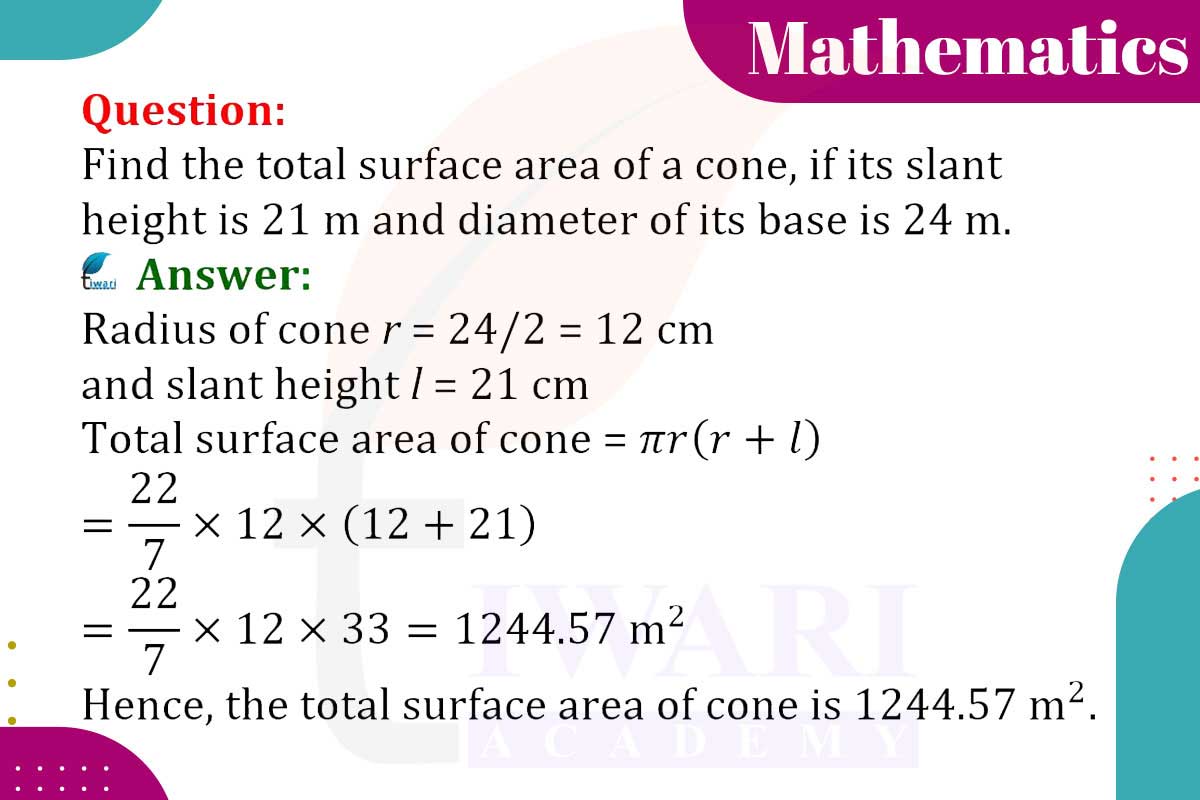To find the total surface area of a cone, add its curved surface area (πrl) and base area (πr²). With a slant height of 21 m and a diameter of 24 m (radius 12 m), the total surface area is π × 12 × 21 + π × 12². This equals 252 π + 144 π = 396π m², approximately 1243.76 m² using π ≈ 3.14.

Let’s discuss in detail
Introduction to Cone Surface Area Calculation
Understanding the total surface area of a cone is a fundamental aspect of geometry. This calculation is crucial in various practical applications, from architectural design to manufacturing. The total surface area of a cone includes both the curved surface and the base area.
Formula for Total Surface Area
The total surface area of a cone is calculated by adding the curved surface area and the base area. The curved surface area is given by the formula πrl, where r is the radius and
l is the slant height. The base area is calculated using the formula πr², where r is the radius of the base.
Given Dimensions
In this specific problem, we are given the slant height of the cone as 21 meters and the diameter of its base as 24 meters. The diameter is the total distance across the circle forming the base of the cone.
Calculating the Radius
To proceed with the calculation, we first need to find the radius of the base. The radius is half of the diameter. Therefore, for a cone with a diameter of 24 meters, the radius r is 12 meters.
Applying the Formulas
With the radius and slant height known, we apply the formulas for the curved surface area (π × 12 × 21) and the base area (π × 12²). Adding these two areas gives us the total surface area of the cone.
Final Calculation and Result
The total surface area is thus 252 π + 144 π = 396 π square meters. Using the approximation π ≈ 3.14, the total surface area is approximately 1243.76 square meters. This calculation is essential for accurate material estimation in real-world applications.
Discuss this question in detail or visit to Class 9 Maths Chapter 11 for all questions.
Questions of 9th Maths Exercise 11.1 in Detail


